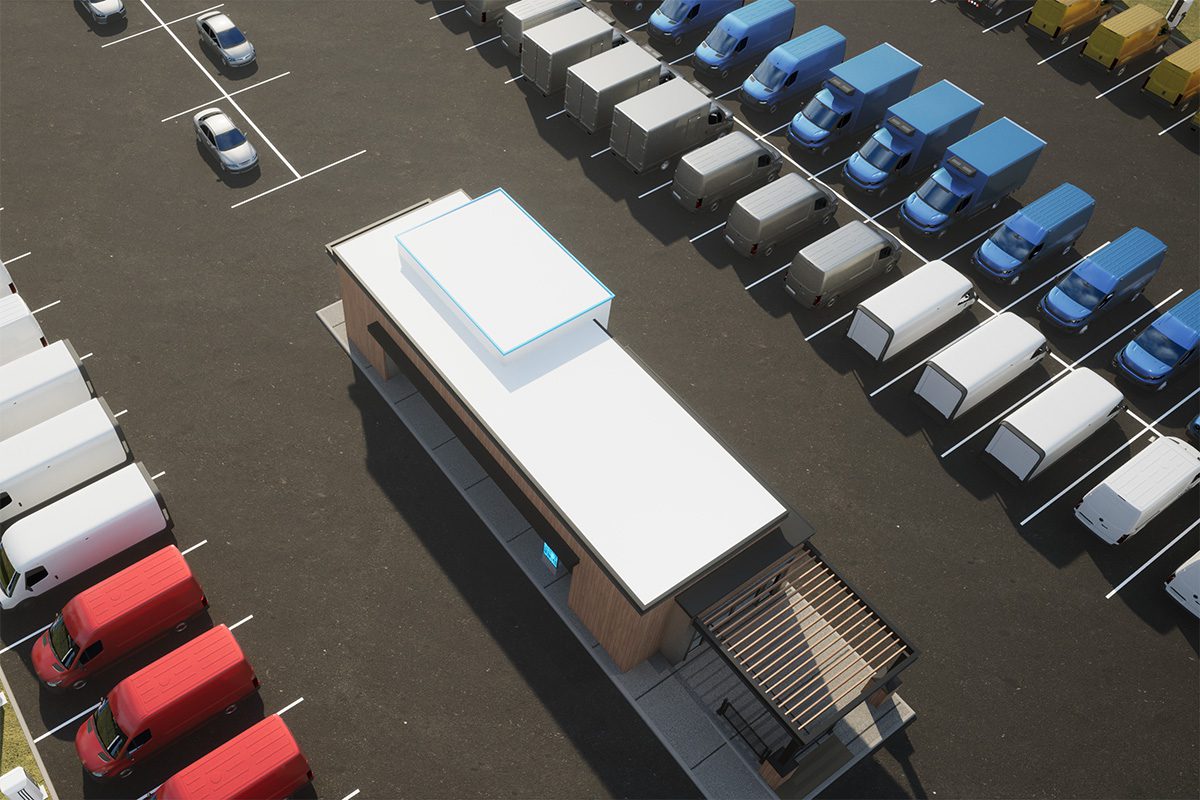With the California Air Resources Board’s (CARB) approval of the Advanced Clean Fleets (ACF) regulation, the state has set the wheels in motion to transform its commercial transportation sector. This ambitious plan to accelerate the large-scale transition to zero-emission medium- and heavy-duty vehicles by 2045 is well underway. This landmark regulation compels fleets to help California meet its climate and air quality goals but brings a new challenge to commercial transportation – where to secure scalable charging infrastructure for all these large electric vehicles. As the compliance deadlines approach, many fleet managers are grappling to find a viable solution to the charging infrastructure dilemma.
Understanding ACF Compliance Deadlines
The ACF Rule sets out a comprehensive framework to drive California’s medium- and heavy-duty fleets towards zero emissions. The regulation might be complex, but the mandates are clear and deadlines for fleets begin sooner than many realize:
- Drayage fleets – Beginning January 1, 2024, only zero-emission drayage trucks may register in CARB’s TRUCRS reporting system. All drayage trucks entering seaports and intermodal railyards will be required to be zero-emission by 2035. (Source)
- High priority and federal fleets – California fleets that operate 50 or more vehicles, or earn $50 million or more in revenue, must begin adopting zero-emissions vehicles (ZEVs) beginning as early as 2024 and increase year over year, depending on the pathway selected and vehicle type. (Source)
- State and local agencies – City, county, special district, and state government fleets must ensure 50% of vehicle purchases are zero-emission beginning in 2024 and that 100% of vehicle purchases are zero-emission by 2027. (Source)
- Light-duty package delivery – The regulation not only affects medium- and heavy-duty vehicles, it also applies to light-duty package delivery vehicles, such as those used by the U.S. Postal Service and private delivery companies. (Source)
These are merely key components of the ACF Rule. For the most updated information, be sure to visit the CARB website.
ACF Vehicle Planning Starts with Infrastructure Planning
While having a ZEV may be enough on paper for ACF compliance, fleets need a way to charge or fuel these vehicles to avoid them becoming inoperable – and expensive – stranded assets. You wouldn’t operate a diesel truck without access to fuel, after all. A crucial element of preparation is either having access to on-site charging infrastructure or developing a comprehensive charging plan for your fleet.
With on-site EV infrastructure projects taking an average of 18-36 months from start to finish and requiring significant upfront capital, local permitting, and know-how, many fleets need an easier, more immediate, and cost-effective infrastructure solution to power the zero-emission vehicles they will soon be required to deploy.
Infrastructure Solutions Designed for Modern Fleets
While these regulatory deadlines may seem years away, when you consider the necessary planning required to install zero-emission infrastructure, the timeline becomes more urgent. One strategy to meet this challenge is to utilize pre-built fleet charging hubs.
E-Ports are pre-built, large-scale EV charging hubs built and powered by NextEra Mobility, a subsidiary of NextEra Energy Resources. They offer reservable parking and charging capacity, and help meet the infrastructure challenge presented by ZEV mandates by providing fleets with an accessible charging infrastructure solution without the typical infrastructure roadblocks such as permitting delays, high construction costs, and utility capacity issues. Along with providing a solution to the zero-emission infrastructure challenge, this infrastructure pathway can save fleets tens to hundreds of thousands of dollars per charger compared to installing on-site infrastructure independently. (Source)
The ACF Rule impacts a broad range of fleet types and vehicles, which can make planning for multiple chargers and charging cycles at one location very challenging. E-Port hubs are created to service multiple vehicle types – from light-duty delivery vehicles to Class 8 Drayage trucks – all of which will be impacted by ACF deadlines as soon as 2024. (Source)
Creating an ACF compliance strategy requires both immediate and long-term planning for vehicles and infrastructure alike, which can be very difficult to align seamlessly. E-Port subscriptions are scalable and responsive to fleets’ individual needs, whether they require a short-term charging solution while waiting on their own infrastructure to be permitted or energized, or access to charging long-term if on-site infrastructure is simply not possible or cost-effective.
Resiliency is an important aspect built into the E-Port depots which fleet managers may not be able to plan for when building their own smaller scale on-site infrastructure. With the knowledge and experience gained from being the world’s largest generator of renewable energy from the wind and sun and a world leader in battery storage, NextEra Energy Resources has built onsite energy generation and storage into most E-Port locations to mitigate the risk of power outages and charging failure, ensuring that fleets can operate under all circumstances. Moreover, E-Ports are large operations designed with spare chargers, making the tricky issue of “charger uptime” effectively moot.
With California E-Port locations now operational in both Oakland and Carson, and the Inland Empire becoming operational as soon as next year, there will be a solution for both Northern and Southern California fleets that are seeking infrastructure solutions to power their zero-emission deployments.
Connect with us to talk through how E-Ports can be a simple and cost-effective infrastructure option to meet your ACF deployment schedule.


